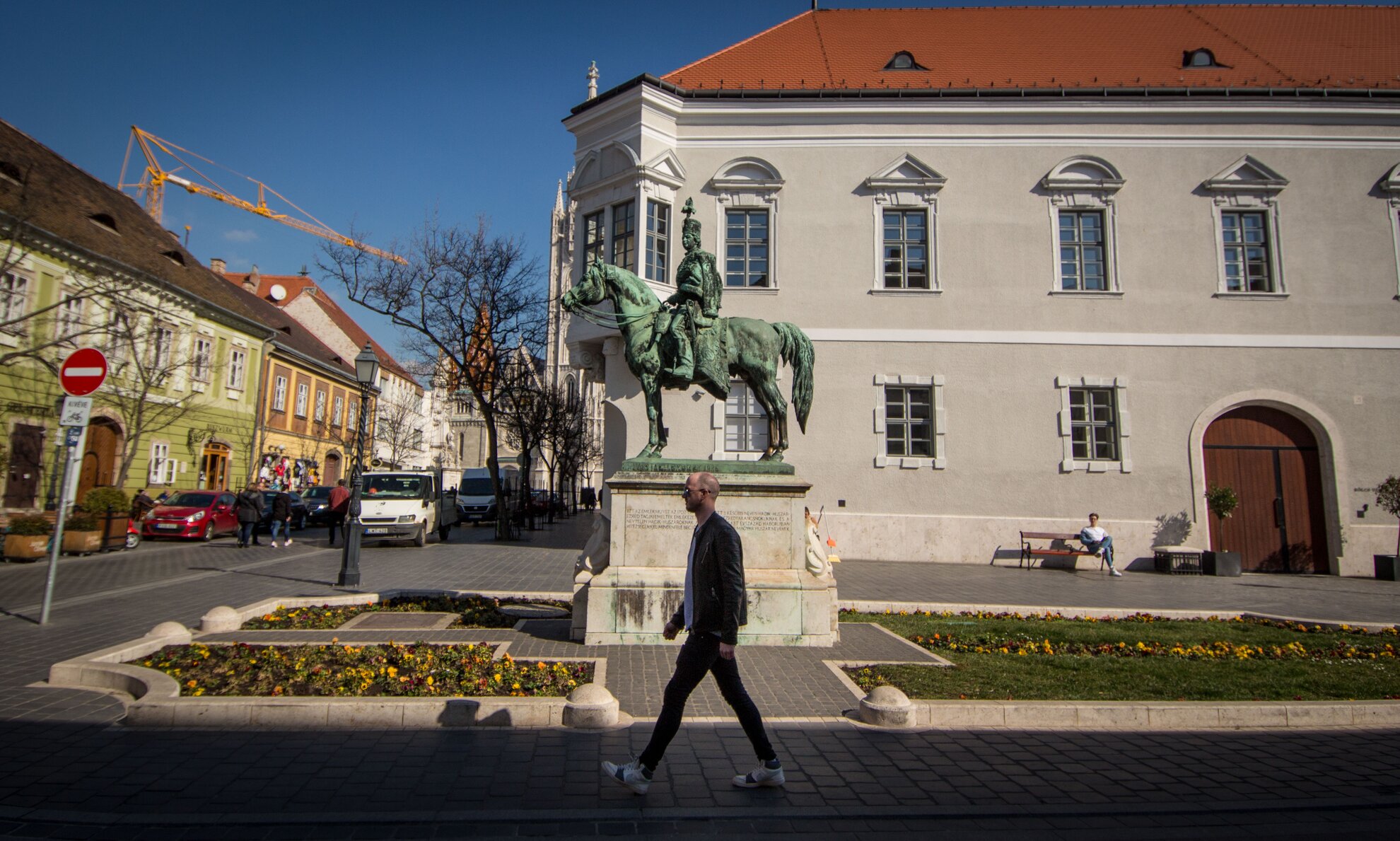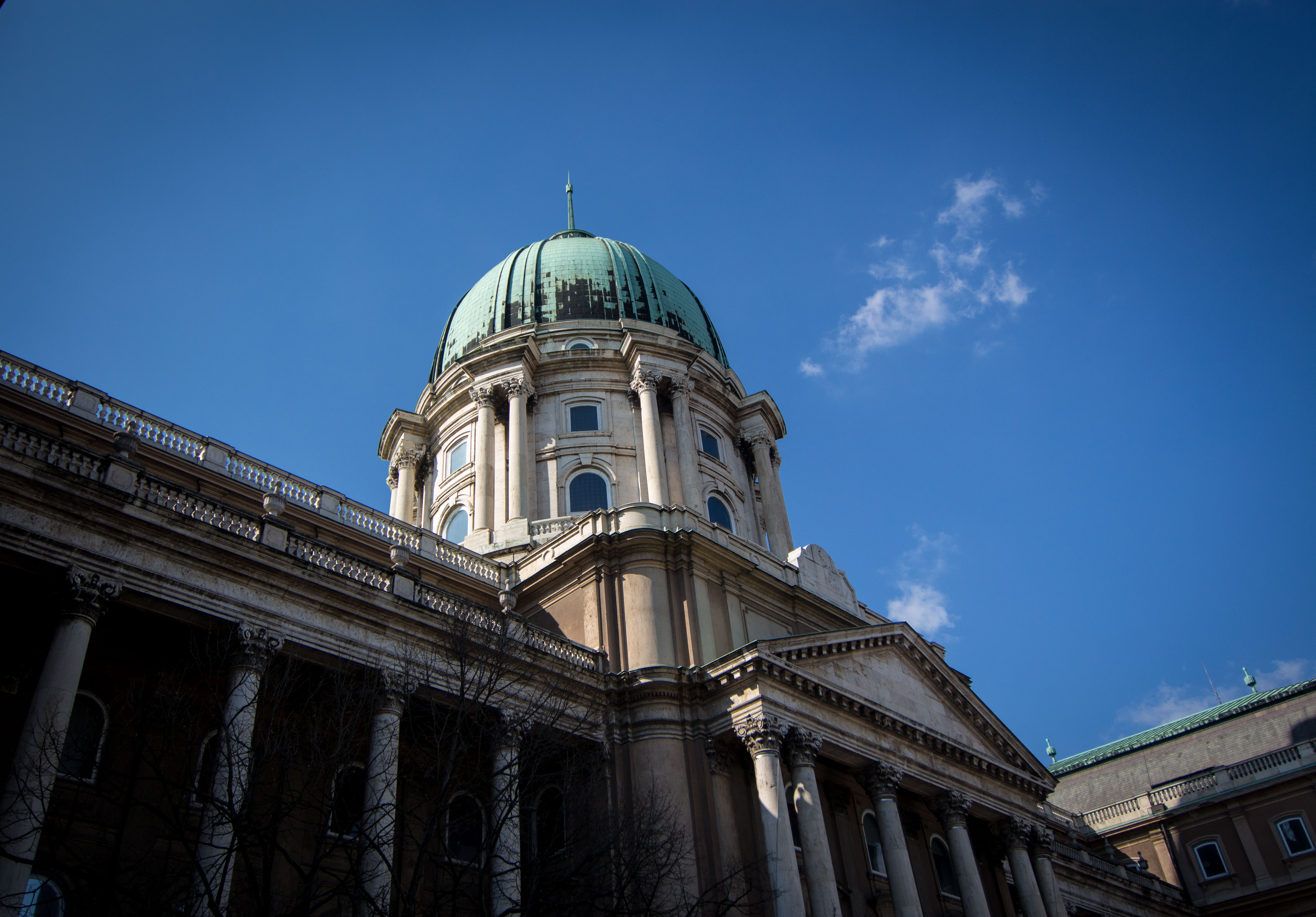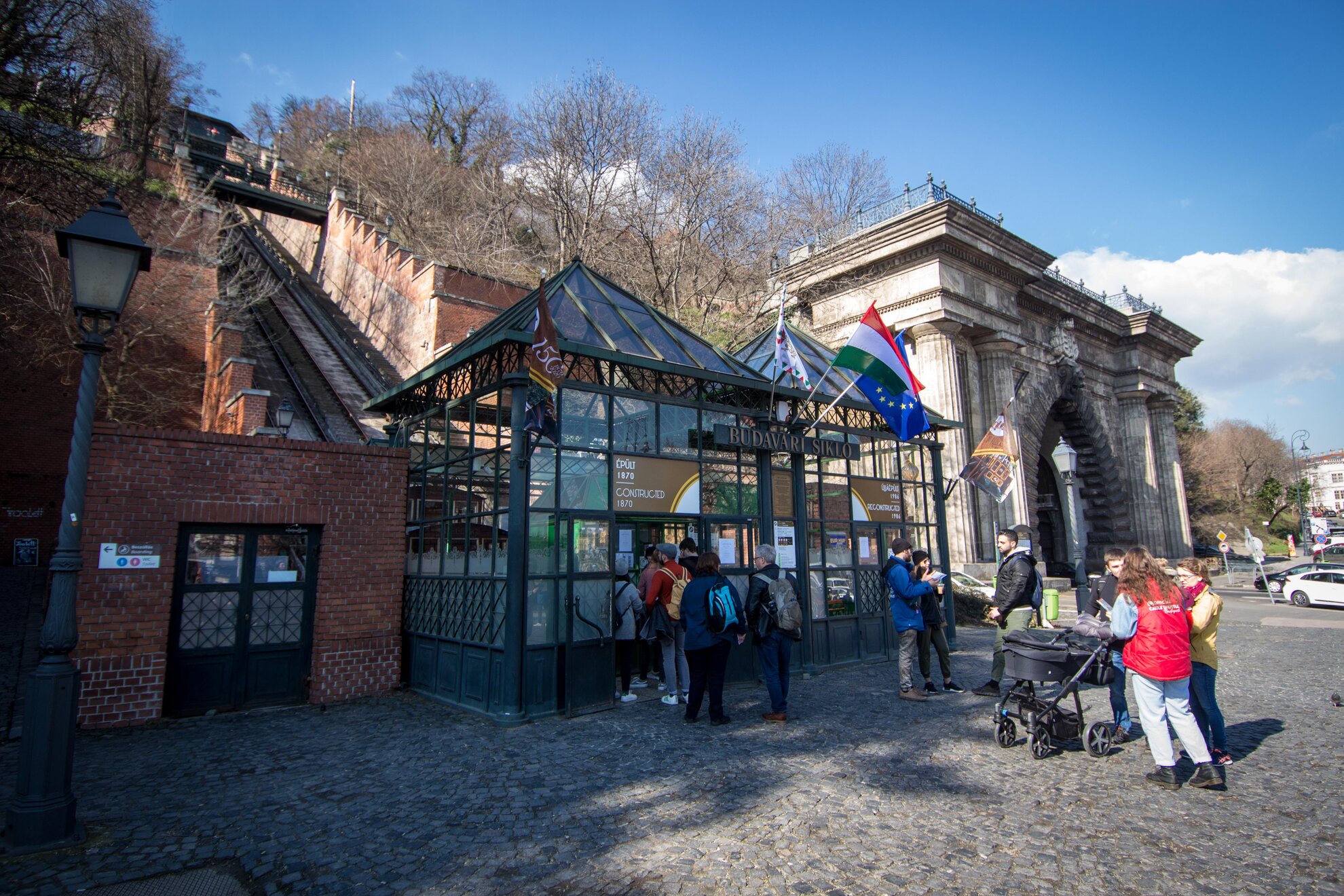
Beginning at the Clark Ádám tér roundabout by the Chain Bridge, Castle Hill rises steeply and sharply. A popular attraction presents itself at the base: the 150-year-old Funicular, which will take you to the top of the hill for 1,400 forints. Alternatively, a little further along is a public lift beside the Várkert Bazár. But if you don’t mind walking, it’s a pleasant climb up the staircase, through the old castle gates, rewarded with fine views as you peek through the windows in the massive stone fortifications to admire the city below.
To the south-east of the Castle is sprawling parkland, with paths and benches that are particularly handy on a summer's day. It can be accessed via a gate from the castle grounds or from the streets down below.
Part of the ancient defence system of Buda Castle can still be seen in the Déli Rondella, a restoration of the circular bastion on the southern tip of the grounds. The walls are five metres thick, and it is believed that it was originally built some time in the 15th century. Now it’s one of the quieter parts of the area, and a fine place to pause and catch your breath.
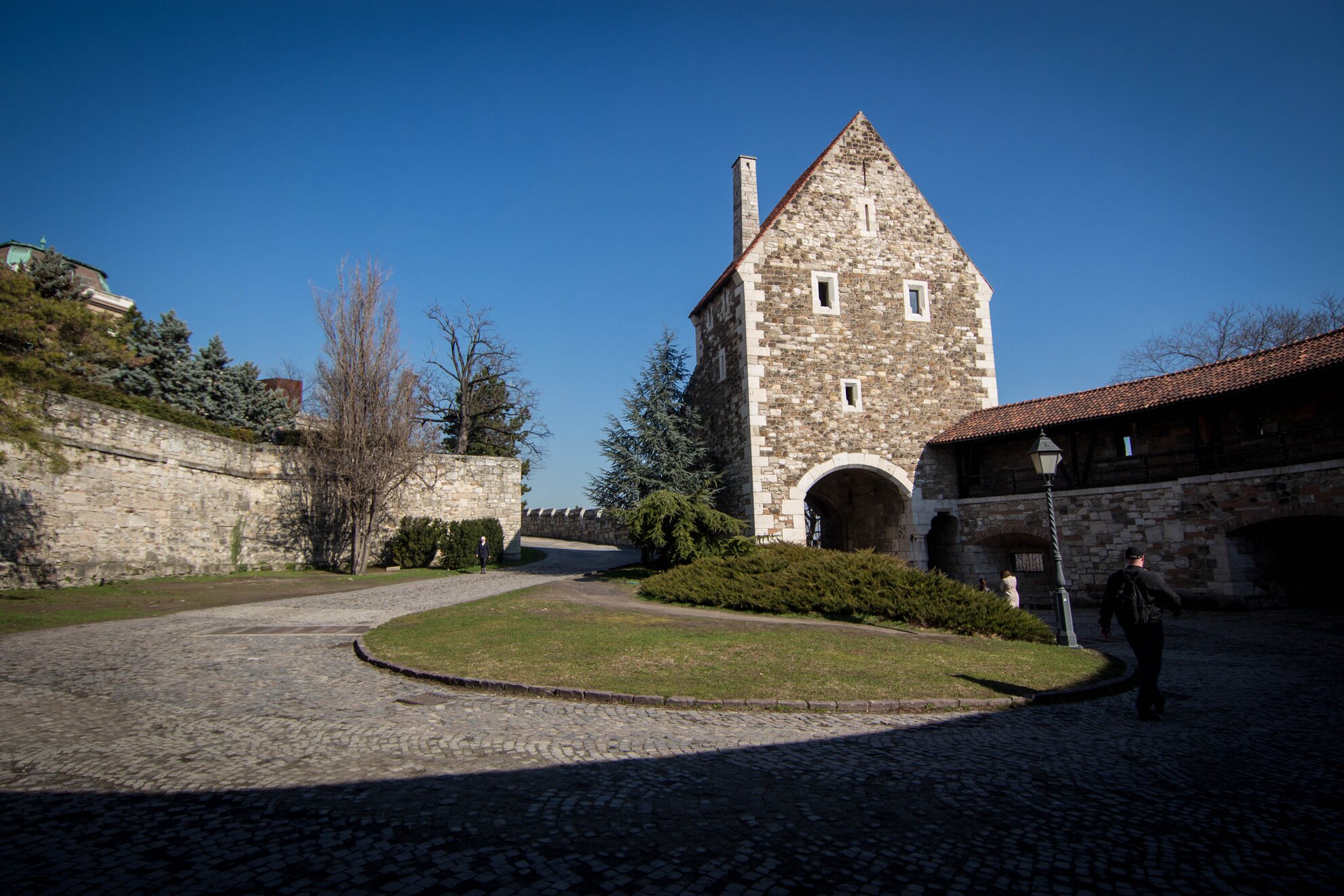
Continuing upwards towards the Castle, it is possible to ascend the battlements, where the view in every direction is vast. A statue of the Virgin Mary faces downtown Pest at the end of one of the walls, and many people opt to have their picture taken here, with the city as their backdrop. In summer, this spot can become extremely crowded, but during the off-season, and off-hours, there’s no better place to take in the magnificence of the Danube, Parliament and Chain Bridge.
Finally we come to the palace itself, with a statue of the Prince Eugene of Savoy directly in front. Rarely used by the Habsburg royals, Buda Palace was destroyed during World War II and rebuilt as prime museum space. Inside is the Hungarian National Gallery – admission is 3,200 forints, with half-price reductions. The cobbled courtyard provides a continued look over the Danube.
Outside, the eye is drawn to a huge statue of the legendary Turul bird that led to the original Magyar tribes here in the late 890s. Alongside are the Budapest Terrace restaurant, and pay-for toilets. Two sets of stairs bring sightseers to the summit, which is also where the Funicular drops off its passengers.
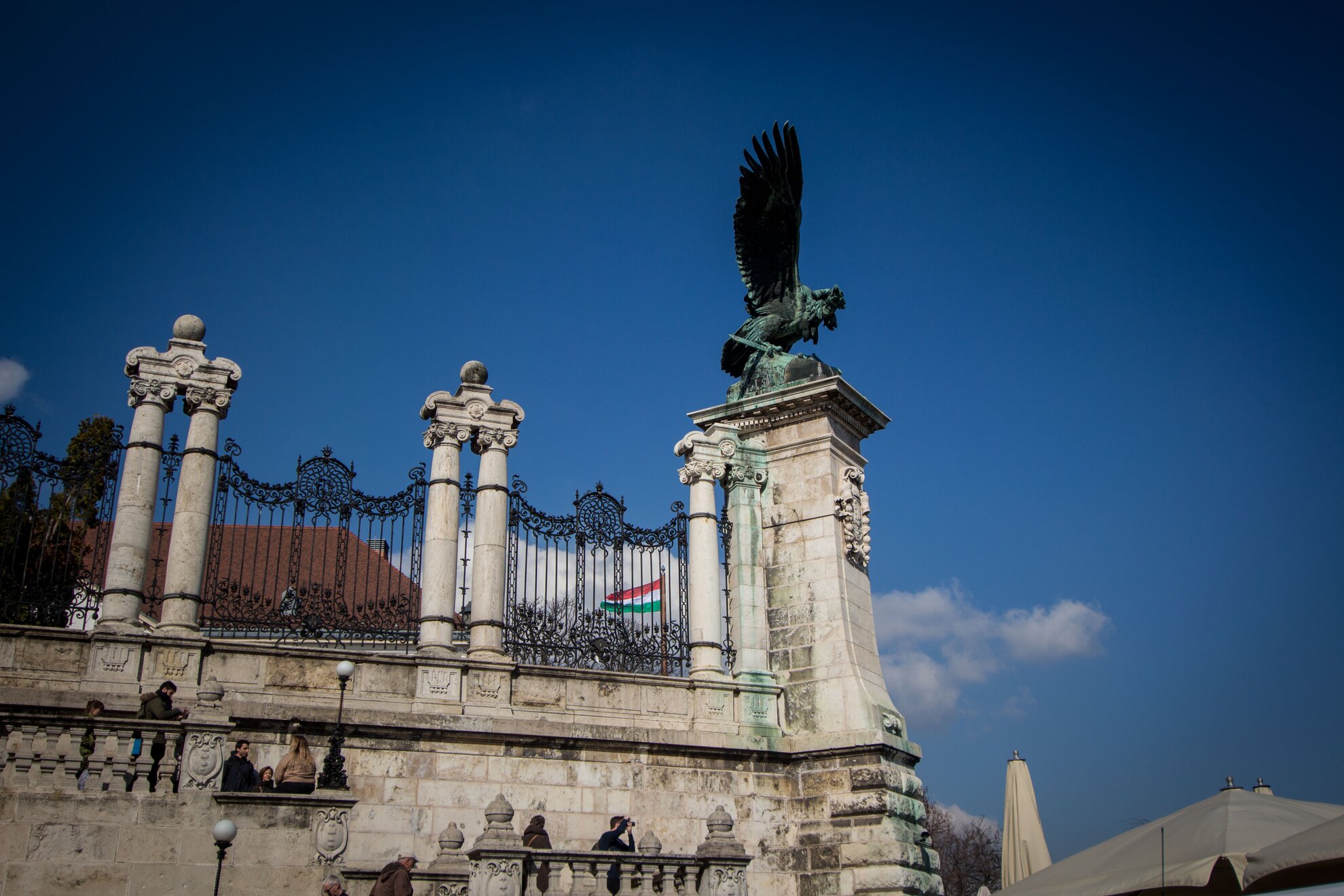
As we leave the palace behind and walk in the direction of the Fishermen's Bastion and Matthias Church, the excavations of old ruin sites are the next view on our list. Some are still very much in process and off-limits to tourists, but other areas are open, and you can step back in time and imagine who used to walk between these impressive stone walls.
As you come to Palota út, turn left towards the statue of Artúr Görgey, a lesser-known but no less significant hero of the 1848 Uprising. With all Buda stretching out in the background, from this vantage point a local might be able to indicate where they went to school and the neighbourhood where they grew up. A walking path continues round the back of the buildings facing Úri utca – a main artery in the Castle District – which follows the ridge, affording a continued view of Buda. When you’re ready to get back to the major landmarks, turn right down one of the many narrow paths and emerge around Matthias Church.
Restaurants and cafés abound, so you can have a light refreshment before heading off on your next Budapest adventure. Take the Funicular back down at the end or head off down any of the charming streets and see where your feet take you.
